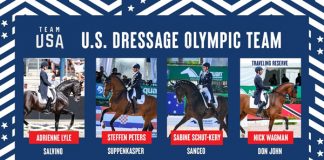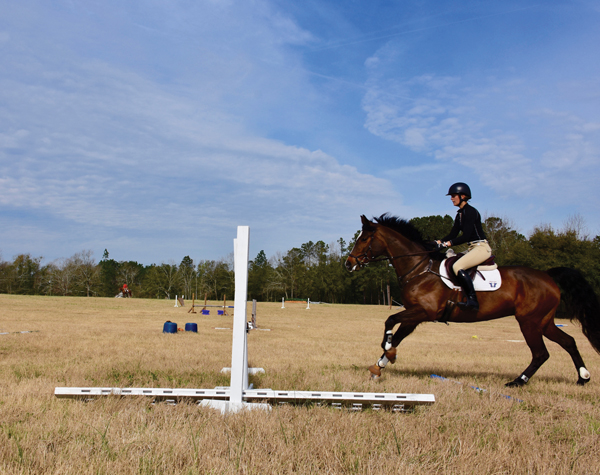
To understand how to achieve a better result without worrying about seeing strides, it’s helpful to break down jumping into the five phases of jumping: the approach, takeoff, in the air, landing, and getaway.
Phase 1: The Approach
The first phase is very important and has various components.
The Line: In the early learning stages, course designers will set lines that are straightforward, normally giving riders enough time between the jumps to recover the quality of the canter before the next fence. As the horse and rider’s education improves, the jumps will come more quickly and the lines become more difficult to ride before you even present to a fence.
It’s in everybody’s interests to try and simplify each line. Like in dressage, there are lines that should be followed, but unlike in dressage, there’s a lot of choice when negotiating a course of fences: lines that are possible to do, lines the horse jumps better from, and lines that save time. Every line chosen must have logic and a plan—not just because that’s what’s expected, but because it suits horse and rider.
Gait and Pace: For most jumps, the gait is the canter. Regardless of the chosen line, the canter must be the very best quality possible to give the horse the best chance of jumping the jump. The gait should be uninterrupted, so sharp corners and obvious rebalances need to be avoided.
Counting the last three strides is also unproductive, as it often leads to “three, two, one … oh, shoot!” If you know you’re going to be right when you start counting, then there’s no point in counting. If you don’t know where you are, then counting won’t help!
Don’t count.
The horse must be allowed to focus solely on the job at hand—that of jumping. By giving him a sense of going somewhere, it improves his buying in to the process. Visually and mentally, the horse must feel—and, where possible, see—that there is a plan and that he has a part in it.
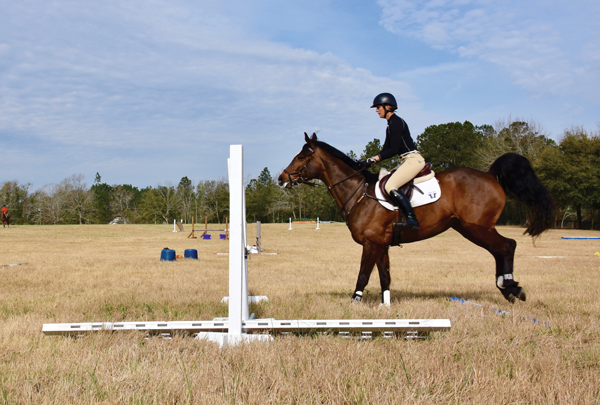
Phase 2: The Take-Off
This is always a source of much angst, but it need not be if the approach has been good. A lot happens at this time and the partnership needs to know who does what.
◆ When does responsibility pass from rider to horse?
◆ Who does what?
◆ What is supposed to happen?
◆ Direction on landing?
◆ What happens if … ?
You are in charge at all times but must feel the horse taking an interest and ultimately taking over in the last few strides before a jump. It’s important to ensure the horse does this, as it’s his job. Some horses are better at making this decision than others. You can help in the decision-making process but must not make the decision for the horse. It’s a fine line.
As the takeoff happens, you can quietly convey the direction on landing.
This should not be done too aggressively, or it will interrupt the jump—just enough to give the horse an indication. The “what if” scenario happens when the horse does not make a decision. You must try to feel it before it happens to avoid a stop or a knock-down.
The horse needs reminding that it’s his job to make a plan and jump cleanly.
This can be done with a kick, a tap with the stick, or a growl. It needs to be something to quickly gain the horse’s attention. When the exercise is repeated, you should expect the horse to make an effort to jump. It needs to be made clear that on takeoff, he is expected to make and execute a plan.
There are many benefi ts to this joint responsibility. The rider knows that a good canter will put you in a reasonable area and that the horse will then take over to make the fine adjustments to jump the fence. You must not get in front of the horse’s thought process during takeoff, nor get left behind.
This is a moment to be practiced over small jumps to develop this feel. Once achieved, the reward is a feeling of being in a true partnership.
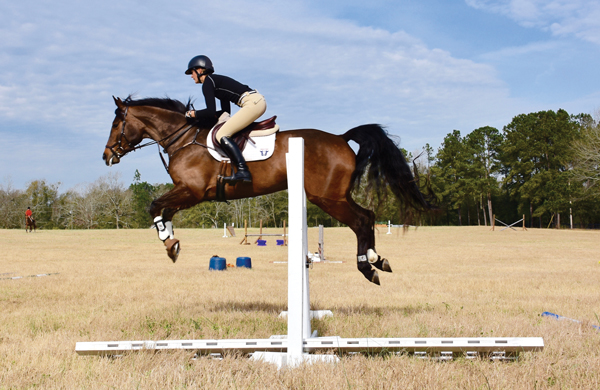
Phase 3: In the Air
This is the time for you to avoid distracting the horse, stay in balance, and interfere as little as possible. The horse is trying to jump the fence clear and does not need you throwing your weight around.
To stay in balance requires a position with a solid foundation. Any necessary movement from you should be in keeping with what the horse has to do to jump the fence.
Negotiating a 3-foot fence is different than leaping over 5 feet. In the air is also a time when the direction of travel can be confirmed to the horse, after you already hinted it to him on takeoff. You need to look where you want to go, offer the lead rein, and put pressure on the stirrup, “stepping into” the new direction.
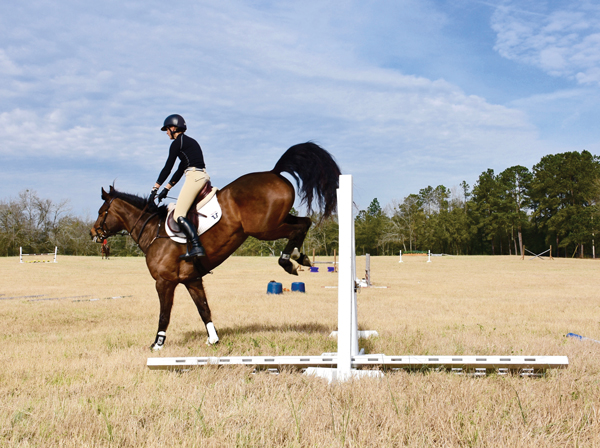
Phase 4: The Landing
This phase is more important than many riders imagine. You have to reestablish responsibility for the next phase—the getaway—and remain in balance.
Staying off the horse’s back and being subtle with the aids as you take back responsibility can be a challenge. The horse has to follow through and ensure his hind legs have cleared the fence, so you must not upset this process.
The first stride after the landing needs to be positive to ensure it’s not short or lacking in energy. Too much “drive” spoils this stride; too little, and the quality of the getaway is diminished.
Poles can be useful to help with this. Place a pole between 12 and 14 feet from the base of the landing side of the jump. Be careful not to put it any closer, as that may encourage the horse to jump it. Place a second pole another 12 feet away. This will improve the quality of the fi rst two strides of the getaway.
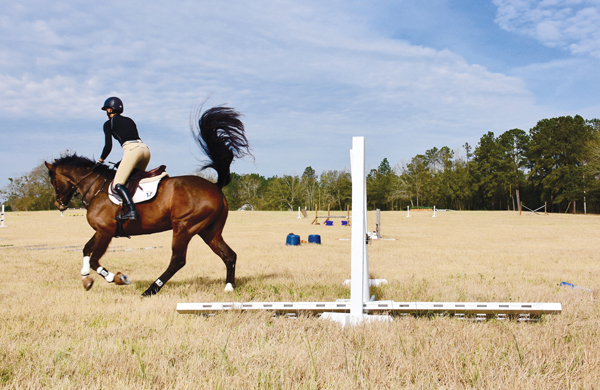
Phase 5: The Getaway
Stride one after the fence should always be good because this provides a solid beginning for the rest of the getaway. Total “order” to the canter may take two or three strides to achieve, but the sooner you have reestablished the canter, the better, as this becomes the approach to the next jump, and the phases of jumping start all over again.
As these five phases of jumping demonstrate, there is a continuing transfer of responsibility between the two partners—horse and rider. For this to happen smoothly, practice is necessary and clarity of these roles needs to be established. Any lack of clarity leads to confusion, which, in turn, leads to poor jumping and a loss of trust.
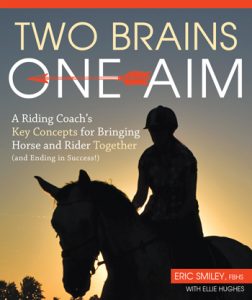 Excerpted with permission from “Two Brains, One Aim,” published by Trafalgar Square Books (www.horseandriderbooks.com).
Excerpted with permission from “Two Brains, One Aim,” published by Trafalgar Square Books (www.horseandriderbooks.com).
Eric Smiley is an event rider who represented ireland at the Olympic level. He coached the Belgian eventing team for the 2012 London Olympics and is an FEI-level judge. Smiley is an author and travels the globe helping professional and amateur riders achieve their goals. Find out more at www.ericsmiley.co.uk.
This article about the 5 phases of jumping originally appeared in the September 2019 issue of Horse Illustrated magazine. Click here to subscribe!




